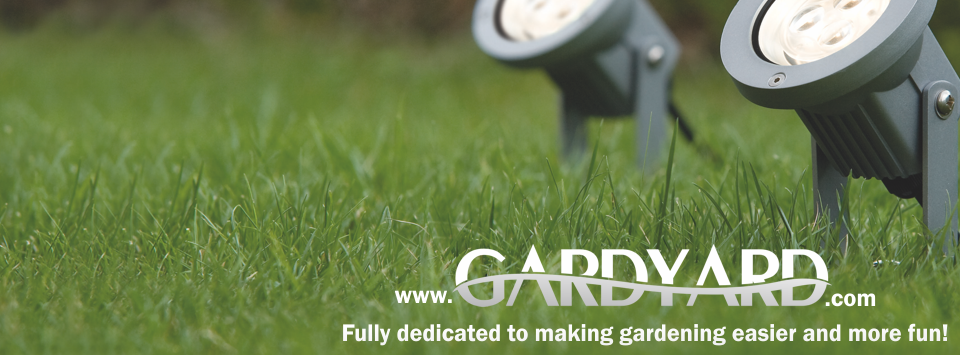Spring is just around the corner so it is the perfect time to start preparing our gardens for all the colorful blooms it brings. There is just so much to do and you’ll have to agree with us that a little help is always welcomed.
Today we are talking gardening applications that are free, easy to use and oh so helpful. Whether you are looking for essential data, like what season a plant blooms or similar or you need inspiration for the design of your garden there are applications that will easily help you in the process.
 Garden Compass Plant / Disease Identifier
Garden Compass Plant / Disease Identifier
By TeamSOA, Inc.
Description: If you have a plant, pest or disease you need identified…look no further. The Garden Compass Plant and Disease Identifier app allows you to take a photo and submit it to our team of expert horticultural garden advisors who will identify it for you, as well as provide you with specific product recommendations to resolve any problems you may have. As your photo passes up the queue you will be kept informed as to its progress. Learn more at gardencompass.com
Download this app free for iPhone/iPad on itunes or for android here
 Garden Time Planner by Burpee
Garden Time Planner by Burpee
Description: The Garden Time app from Burpee is the perfect tool to help gardeners know when to sow, transplant and expect to harvest vegetables and herbs specific to their garden region. The app automatically creates a task list to notify the user when their next sow or transplant date arrives. Included within the app is a full database of plants, local weather, and links to how-to gardening videos. Works best on Android 4.0 devices and above. Runs on Phone and Tablet Devices. Learn more at burpee.com
Download this app free for iPhone/iPad on itunes or for android here
 Sprout it – Gardening ideas and tips, planting organic vegetables, herbs & fruits guide by Växa Design Group
Sprout it – Gardening ideas and tips, planting organic vegetables, herbs & fruits guide by Växa Design Group
Description: Grow Easy. Grow Smart. Sprout it® is a free app that grows with you! Grow your own fresh vegetables and herbs with Sprout it’s fully customized support. Select plants, schedule plantings and get detailed instructions, reminders and info when you need it most.
Here’s what you’ll get with the Sprout it app:
– Library of the most popular plants and varieties, so you can learn which vegetables and herbs are best for your garden and location
– Get inspired with themed gardens, projects and recipes
– Location-based intelligence to help you time plantings correctly based on your frost date
– Option to grow from seed, starter plants, sets and now including support for Miracle-Gro® Gro-ables® Seed Pods™
– Interactive milestones make sure your real garden matches your Sprout it garden – let Sprout it be your garden planner and toolkit whether you grow with natural, organic or conventional methods!
– Beautiful illustrations to help you visually track your garden’s progress
– Reminders, tips and information specific to your plants and your garden delivered at the right time, based on your planting dates and preferences
– Easy-to-read reference information for plant care, harvest, common problems and storage & cooking
– Completing your gardener profile helps us customize your experience
– Integrated weather information and alerts to help with protection and recovery when severe weather hits
– A single log-in offers access to your account across iPhone, iPad and responsive web platforms
Every garden is different and the Sprout it app supports growing a garden that’s right for your location and lifestyle—first-timer or experienced, conventional or organic, backyard or patio
Download this app free for iPhone/iPad on itunes or for android here
 MyGarden
MyGarden
By TrendsCo. bvba
Description: The MyGarden App is the mobile version of the social network website for garden lovers MyGarden. It allows you to track your account, plants, friends and update your garden status.
Download this app free for iPhone/iPad on itunes or for android here
 iScape Free
iScape Free
By Home Revivals llc
Description: Spectacular landscape designs made easy with iScape Free.
• “When you’re planning a new garden, or considering a change to an established one, it can be difficult to visualize the results. This is where iScape comes in handy.” – The NY Times
• “If you’re DIYing it, iScape makes it easy to plan out what to buy and how to put it all together. If you’re hiring a landscaper, the app can help you explore ideas and share your vision.” – Forbes
iScape Free gives you an opportunity to test drive the paid version at no charge. Upon user requests, we have provided individual categories available as In-App Purchases in case you do not need the entire iScape Database. If you are going to purchase multiple categories, please note that upgrading to the paid version is the better deal.
The landscape design app allows you to see your options before the work is done – and most importantly, before the money is spent. Simply take a picture of your house and start bringing your vision to life!
Download this app free for iPhone/iPad on itunes or for android here
The Best Gardening Apps to Download Before Spring Comes!









































